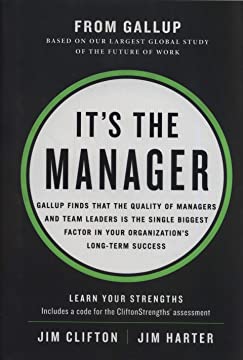Who's Responsible for Employee Success?
Cathie Leimbach • July 15, 2020
This is a subtitle for your new post

When I facilitate client meetings, every person in the room shares their perspective on the matter at hand and contributes ideas of how to move forward. Managers are often shocked at the positive energy and quality of input from their staff. Why are so many leaders, managers, and supervisors unaware of their staff’s potential and their value to the organization?
One reason is that few managers ask questions. There is a tendency for supervisors to give their staff day-by-day, or even hour-by-hour, specific instructions on what to do next, or they leave their staff alone to figure everything out by themselves. Few managers invest a lot of time using an intermediate approach. Daily or weekly two-way conversations between staff members and supervisors are relatively uncommon. Without such discussions, supervisors are unaware of their staff’s strengths and interests so can’t leverage their potential.
And, when staff don’t interact with others at work, they don’t feel valued. Their enthusiasm and productivity drop. Then, managers get frustrated with employee apathy and mediocre productivity.
Leaders push staff to work harder. Staff complain that managers aren't helpful or expectations aren't clear. Decades of Gallup research has revealed that the staff's assessment of the problem is pretty accurate. 70% of the factors that contribute to disappointing morale, engagement, productivity, and profit are the responsibility of managers.
So, what is the root cause of mediocre organizational outcomes? IT’S THE MANAGER!
Effective managers have servant hearts. They develop the skills needed to help their staff be the best they can be. They manage by asking questions that inspire great conversations and by becoming competent in the fifteen core skills of effective management. Unfortunately, this description of an effective manager does not describe the majority of managers.
What will you do this week to move beyond average? What is your next step to becoming a manager who leads with excellence and develops a healthy, high performance workplace team?
As the year comes to a close, it’s worth pausing to ask a simple question: What brought you joy this year at work and in life? Joy doesn’t always arrive in big, headline moments. Often, it shows up quietly—in meaningful conversations, shared laughter, progress made, lessons learned, or the steady presence of people who support us. Sometimes joy is found in growth, sometimes in rest, and sometimes in simply getting through a challenging season with resilience and grace. Take a few minutes to reflect. What moments made you smile? When did you feel most connected? For what are you grateful? This reflection isn’t about ignoring the hard parts of the year. It’s about honoring the bright spots that sustained you through them. Recognizing joy helps us close the year with perspective and open the next one with hope. As the holidays approach, give yourself permission to slow down, savor meaningful moments, and share joy with others—through kindness, gratitude, and presence. May this season be filled with moments that lift your spirit, and may you carry that joy with you into the year ahead. 👉 Take a moment to pause this season—view the Reflecting on Joy one-pager and reflect on what brought meaning to your work and life this year. Wishing you a truly joy-filled Christmas season .
As you’re wrapping presents this season, it’s also a great time to wrap up your year with intention. The end of the year offers a natural pause—a chance to reflect, appreciate, and celebrate the people who made a difference along the way. At work, we often move from one deadline to the next without stopping to say thank you. Take a moment to recognize your teammates. Maybe it’s the coworker who always had your back, or the leader who helped you stretch and grow. A sincere “thank you” or a short handwritten note can go a long way. It doesn’t need to be elaborate—just genuine. The same holds true in your personal life. When was the last time you told a friend or family member how much they mean to you? Between holiday plans and to-do lists, it’s easy to forget that our presence often matters more than any present. Every year brings both highs and lows. As this one comes to a close, choose to focus on what went right. Celebrate the small wins and acknowledge the people who supported you through the challenging moments. So, while you’re taping up gift boxes, take a little time to wrap up your year with gratitude. Send the text. Write the card. Let people know they’re valued. After all, the most meaningful gift you can give is helping someone feel truly appreciated. Want more simple, meaningful ways to express appreciation—without overspending? 👉 View Sharing Joy at Work Without Breaking the Bank for practical ideas you can use right away.
